10 Best High-Fiber Dinner Recipes for a Healthy Gut
Table of Contents
Introduction to High-Fiber Dinner Recipes
Are you looking for ways to improve your gut health while enjoying delicious meals? High-fiber dinner recipes might be the key! Fiber is essential for maintaining a healthy digestive system, promoting regular bowel movements, and feeding the beneficial bacteria in your gut. In this article, we’ll dive into the best high-fiber dinner recipes that not only taste amazing but also support a healthy gut.
Why Fiber is Essential for Gut Health
The Role of Fiber in Digestion
Fiber plays a crucial role in digestion by adding bulk to your stool, making it easier to pass through your digestive system. This helps prevent constipation and supports a healthy digestive tract.
How Fiber Improves Gut Bacteria
Fiber also acts as food for the good bacteria in your gut. These bacteria help break down food, absorb nutrients, and protect your immune system. A high-fiber dinner recipes promote the growth of these beneficial bacteria, which can improve your overall gut health.
Types of Fiber: Soluble vs. Insoluble
Difference Between Soluble and Insoluble Fiber
Fiber comes in two forms: soluble and insoluble. Soluble fiber dissolves in water to form a gel-like substance, helping to lower cholesterol and maintain stable blood sugar levels. Insoluble fiber does not dissolve in water and helps to add bulk to the stool, preventing constipation.
Benefits of Each for Gut Health
Both types of fiber are essential for gut health. Soluble fiber helps feed your gut bacteria, while insoluble fiber promotes regular bowel movements. Incorporating both into your diet will give you the best digestive benefits.
10 Best High-Fiber Dinner Recipes for a Healthy Gut
Now that we’ve covered the importance of fiber, let’s dive into the 10 best high-fiber dinner recipes you can make to support your gut health.
| Recipe | Portion Size (Adults) | Portion Size (Children) | Approx. Fiber Content per Adult Serving | Suitable Age | Additional Notes |
| Quinoa and Black Bean Stuffed Peppers | 1 whole pepper | 1/2 pepper | 8-10 grams | 2+ years | Quinoa is a good protein source; adjust pepper size for younger children. |
| Lentil and Vegetable Stir-Fry | 1 cup | 1/2 cup | 12-14 grams | 3+ years | Lentils provide high fiber; may reduce spices for children. |
| Chickpea and Spinach Curry | 1 cup | 1/2 cup | 10-12 grams | 4+ years | Adjust curry spice level for younger eaters; serve with brown rice for added fiber. |
| Sweet Potato and Black Bean Tacos | 2 tacos | 1 taco | 8-10 grams | 4+ years | Good source of vitamin A and fiber; avocado adds healthy fats. |
| Whole Wheat Pasta with Kale and Mushrooms | 1 1/2 cups | 1 cup | 7-9 grams | 3+ years | Whole wheat pasta provides more fiber; children may prefer softer kale. |
| Barley and Roasted Vegetable Salad | 1 1/2 cups | 1/2 – 1 cup | 10-12 grams | 4+ years | Barley is filling and fiber-rich; roasting vegetables makes them more appealing. |
| Farro and Chickpea Stew | 1 1/2 cups | 1 cup | 8-10 grams | 4+ years | Farro is rich in fiber and protein; stew texture may need adjustment for toddlers. |
| Oatmeal-Crusted Salmon with Roasted Veggies | 1 salmon fillet + 1 cup veggies | 1/2 fillet + 1/2 cup veggies | 6-8 grams | 5+ years | Oats add fiber, while salmon provides healthy fats; balance portion based on age. |
| Cauliflower and Lentil Shepherd’s Pie | 1 1/2 cups | 1 cup | 8-10 grams | 4+ years | Lentils and cauliflower are high in fiber; smooth texture is kid-friendly. |
| Black Bean and Avocado Burrito Bowl | 1 bowl | 1/2 bowl | 10-12 grams | 4+ years | Black beans and avocado provide fiber and healthy fats; reduce portion for toddlers. |
1. Quinoa and Black Bean Stuffed Peppers
Quinoa and black beans stuffed in bell peppers, rich in fiber and vitamins.
Ingredients:
Quinoa, black beans, bell peppers, tomatoes, cumin.
Prep:
Stuff peppers with the mixture and bake for 25-30 minutes.
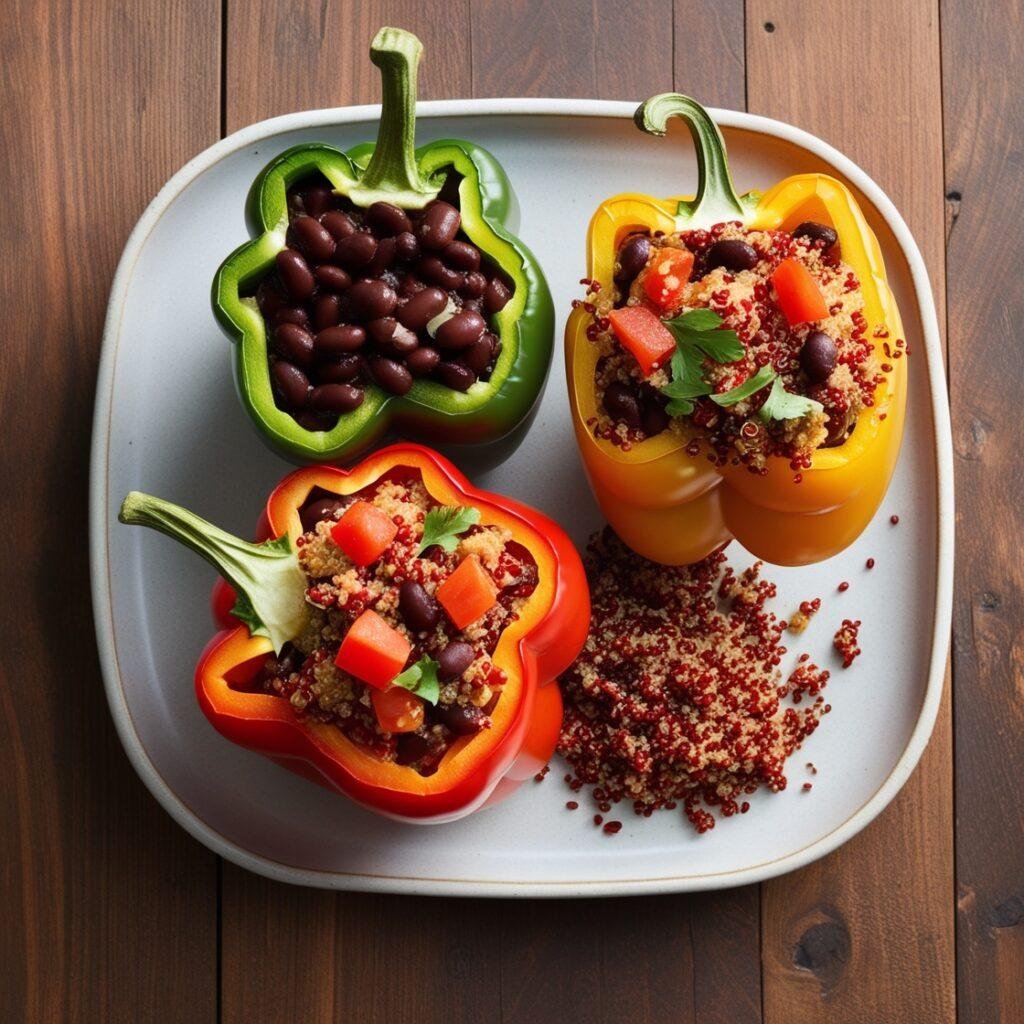
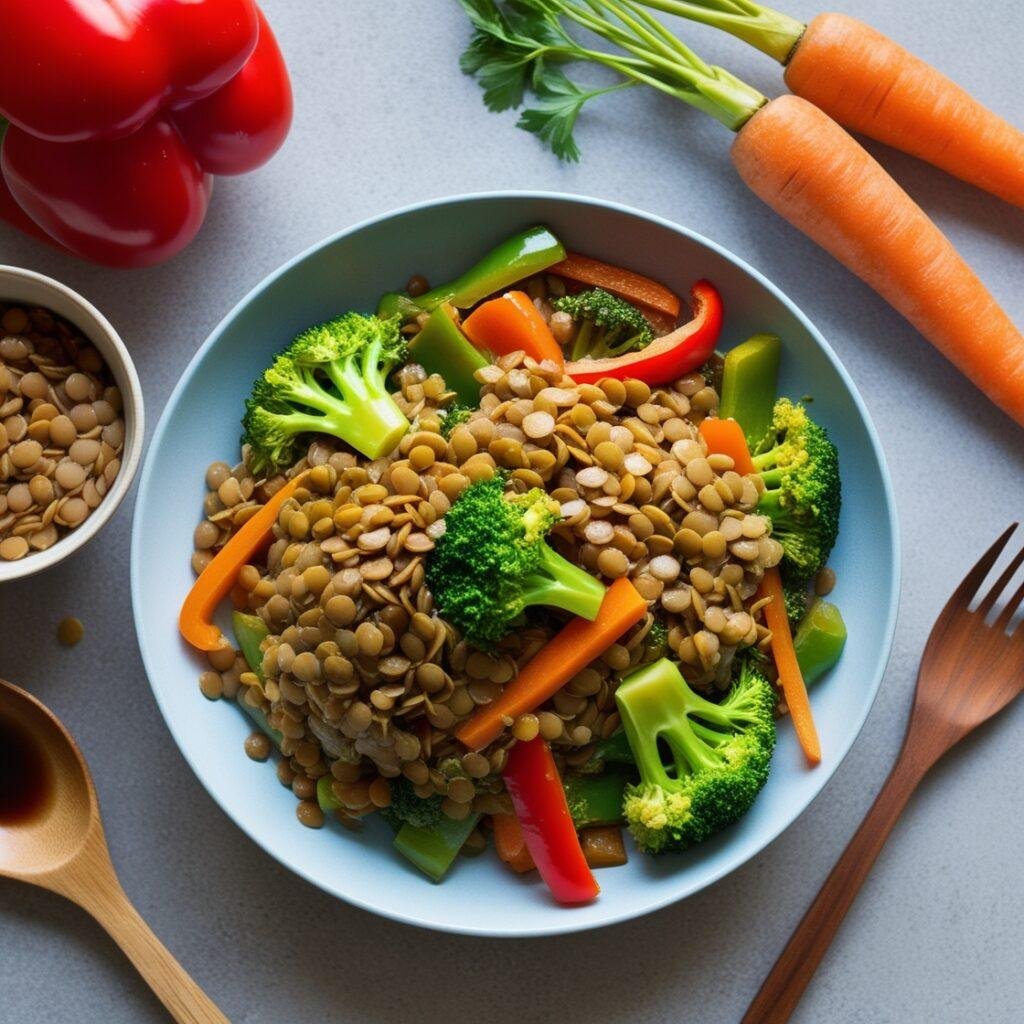
2. Lentil and Vegetable Stir-Fry
Lentils paired with stir-fried veggies make for a quick, fiber-filled dinner.
Ingredients:
Lentils, broccoli, bell pepper, carrot, soy sauce.
Prep:
Stir-fry veggies, add lentils, and cook for 3-4 minutes.
3. Chickpea and Spinach Curry
Chickpeas and spinach in a spiced, creamy curry.
Ingredients:
Chickpeas, spinach, coconut milk, curry powder.
Prep:
Simmer chickpeas and curry, then add spinach.
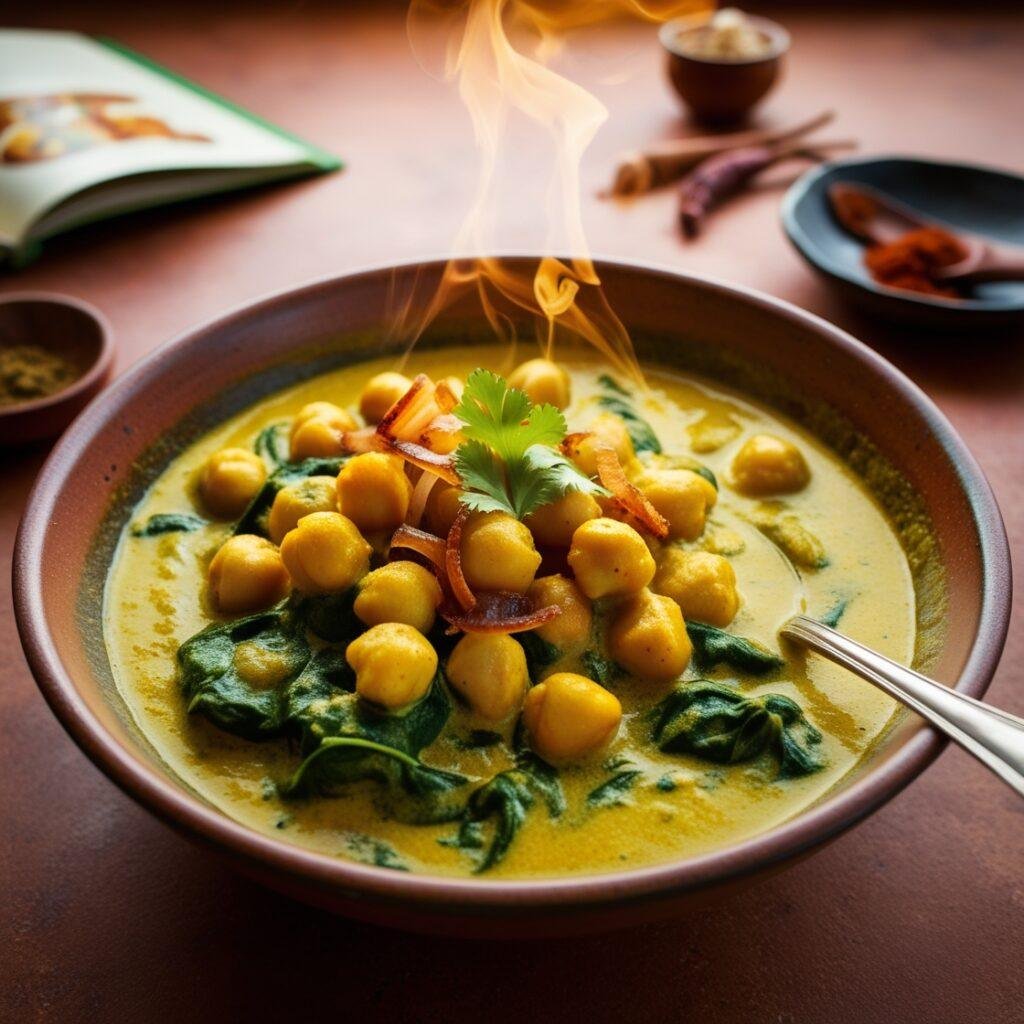
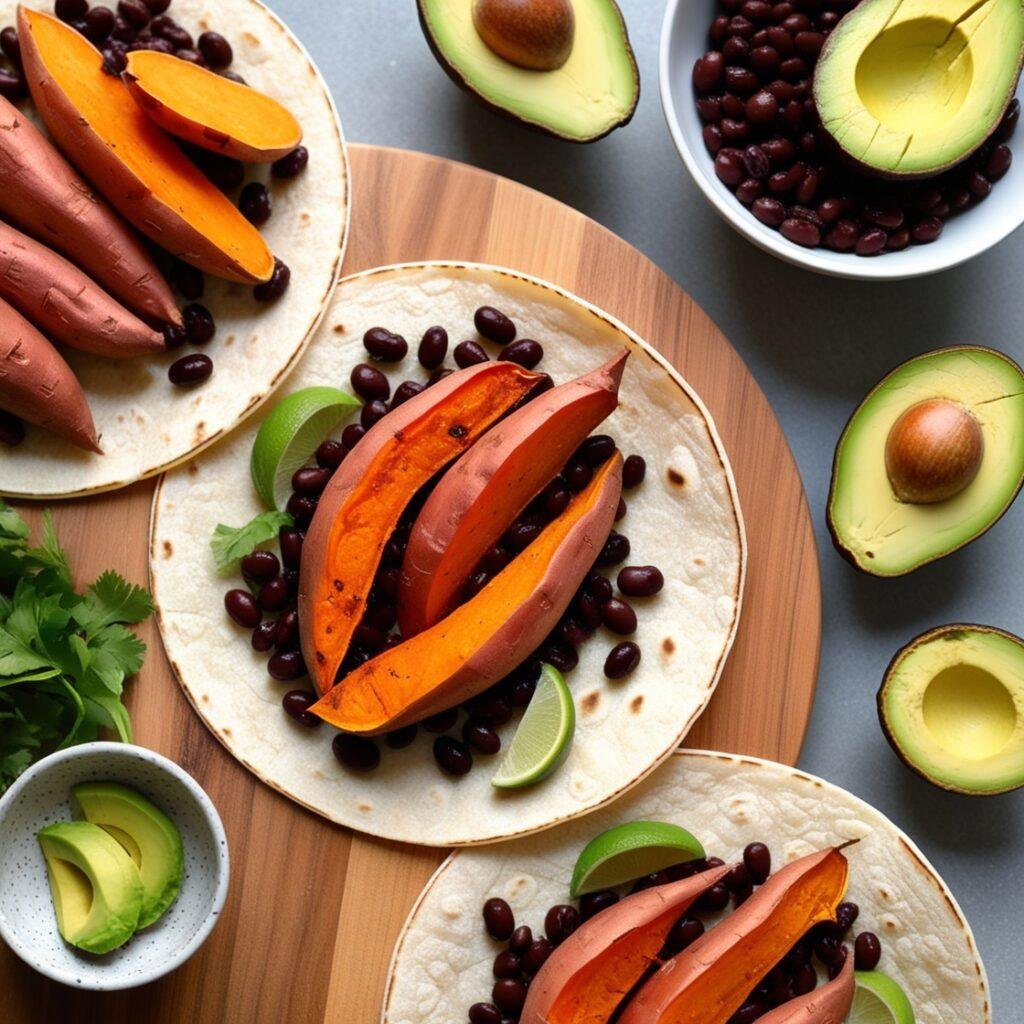
4. Sweet Potato and Black Bean Tacos
Sweet potatoes and black beans in soft corn tortillas for a fiber-rich meal.
Ingredients:
Sweet potatoes, black beans, avocado, tortillas.
Prep:
Roast sweet potatoes and assemble tacos with beans and avocado.
5. Whole Wheat Pasta with Kale and Mushrooms
Whole wheat pasta with sautéed kale and mushrooms for added fiber.
Ingredients:
Whole wheat pasta, kale, mushrooms, garlic.
Prep:
Cook pasta, sauté garlic, kale, and mushrooms, then combine.
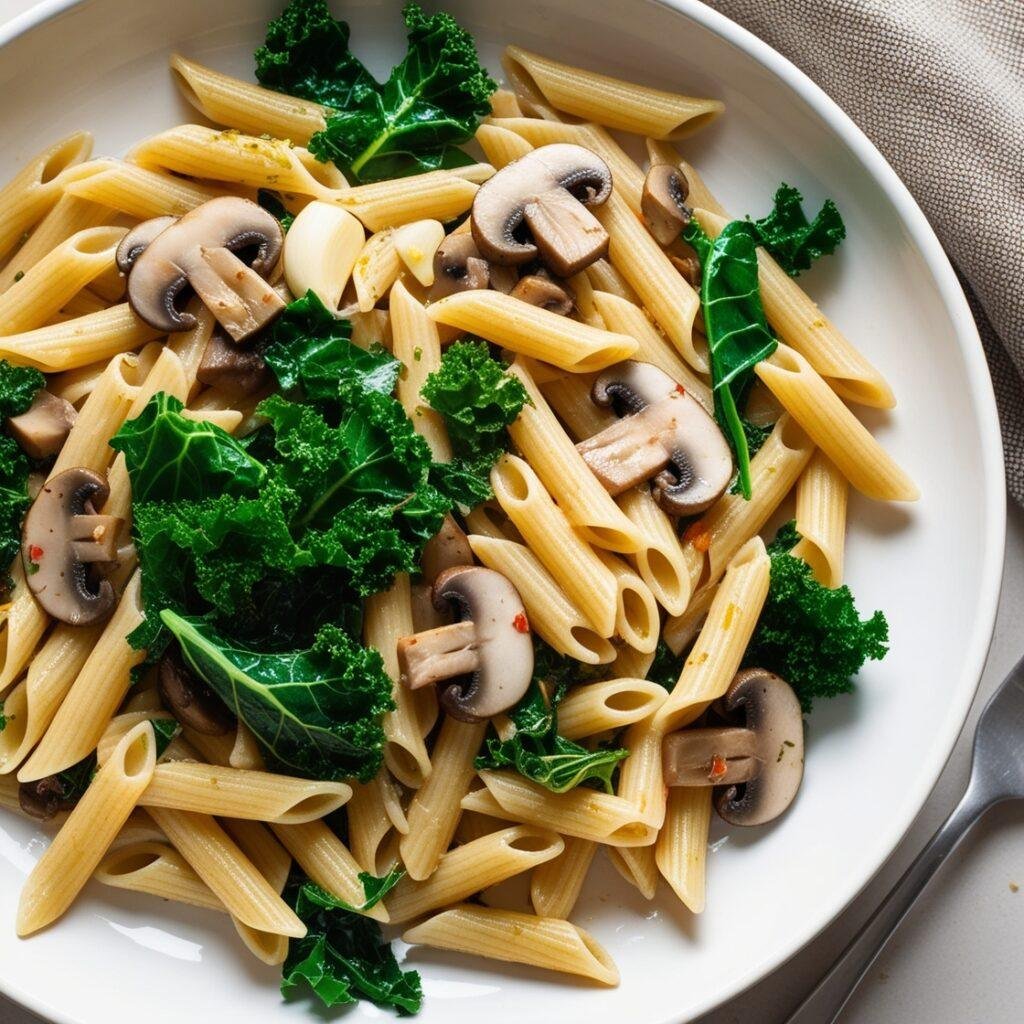
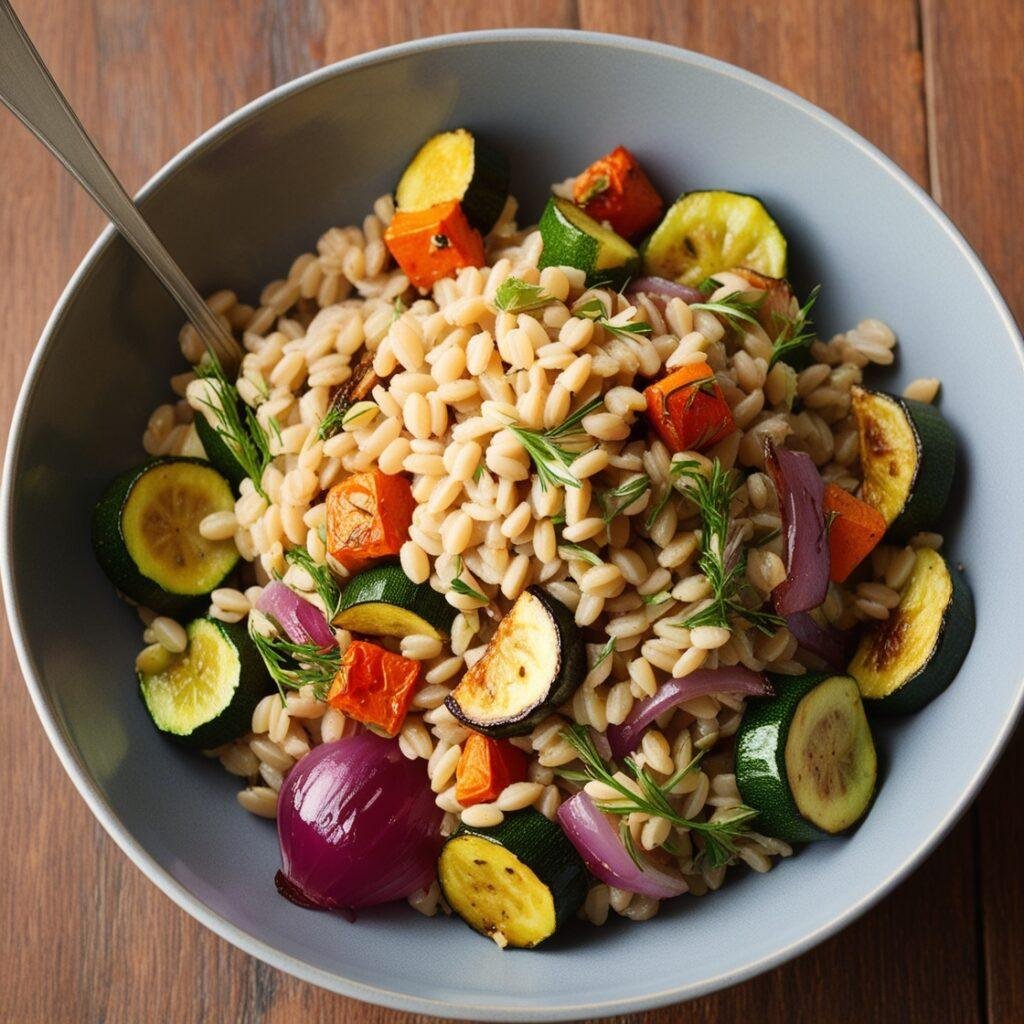
6. Barley and Roasted Vegetable Salad
Nutty barley with roasted vegetables, a filling and fiber-rich salad.
Ingredients:
Barley, zucchini, red onion, olive oil.
Prep:
Roast vegetables and mix with cooked barley.
7. Farro and Chickpea Stew
Hearty farro and chickpeas in a comforting stew.
Ingredients:
Farro, chickpeas, carrot, celery, vegetable broth.
Prep:
Simmer all ingredients until thickened.
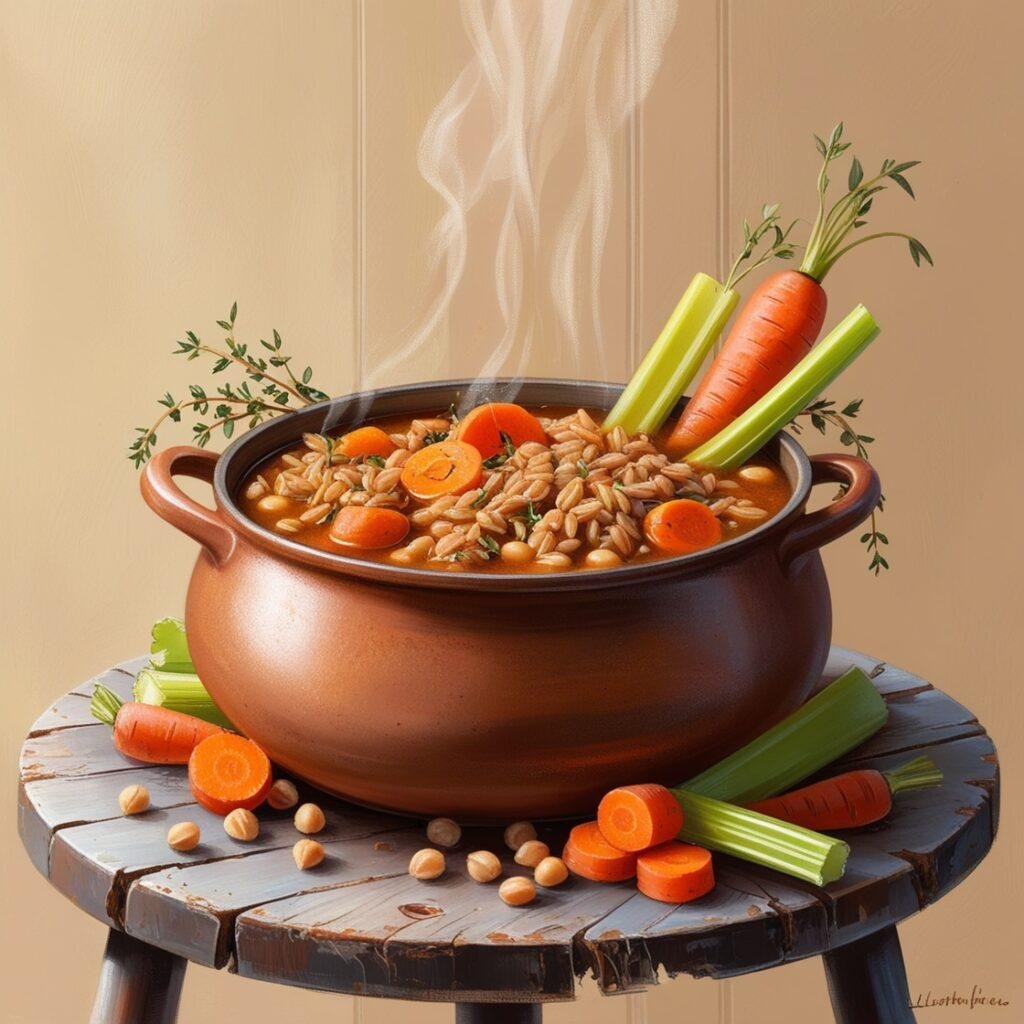
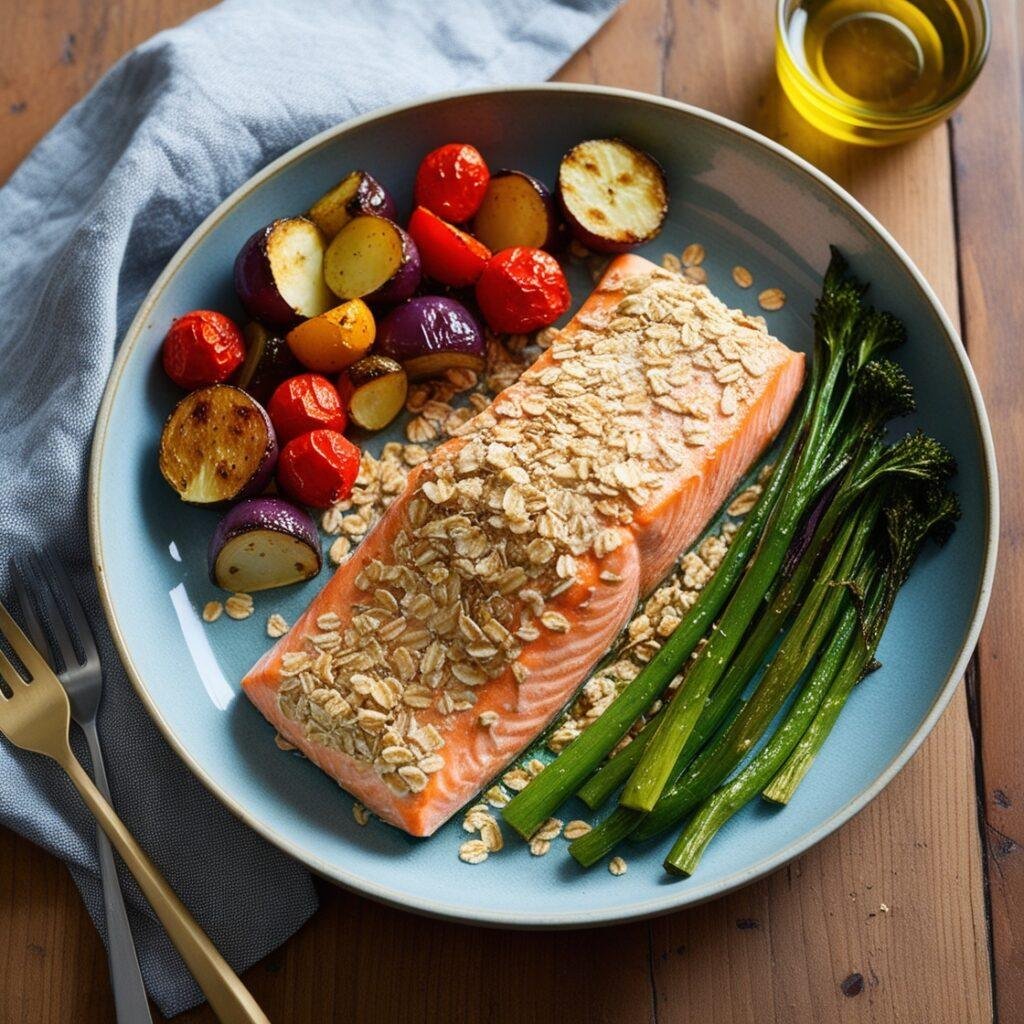
8. Oatmeal-Crusted Salmon with Roasted Veggies
Oat-crusted salmon served with roasted vegetables for a fiber boost.
Ingredients:
Salmon, oats, egg, olive oil.
Prep:
Coat salmon in oats and bake for 15-20 minutes.
9. Cauliflower and Lentil Shepherd’s Pie
A veggie-packed shepherd’s pie topped with mashed cauliflower.
Ingredients:
Lentils, cauliflower, mixed veggies, tomato paste.
Prep:
Layer lentils and veggies, top with cauliflower, and bake.
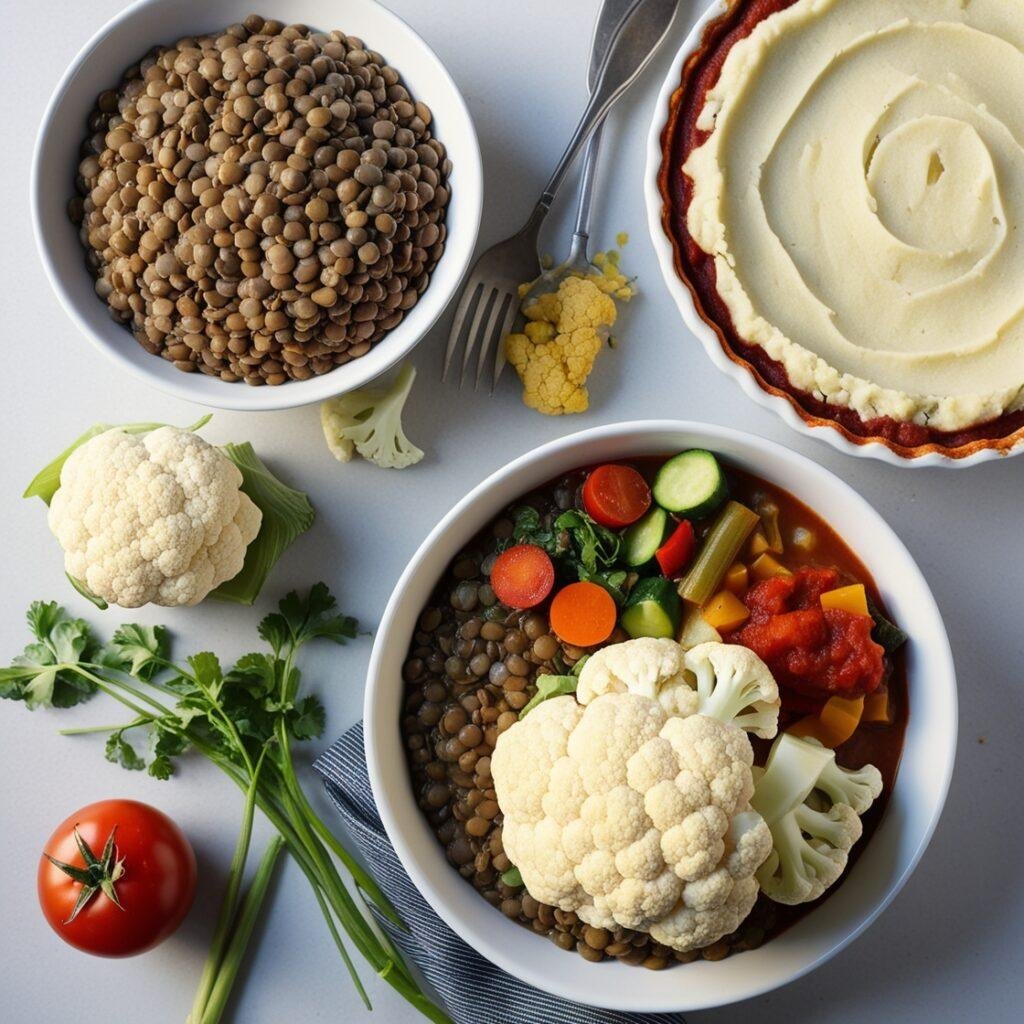
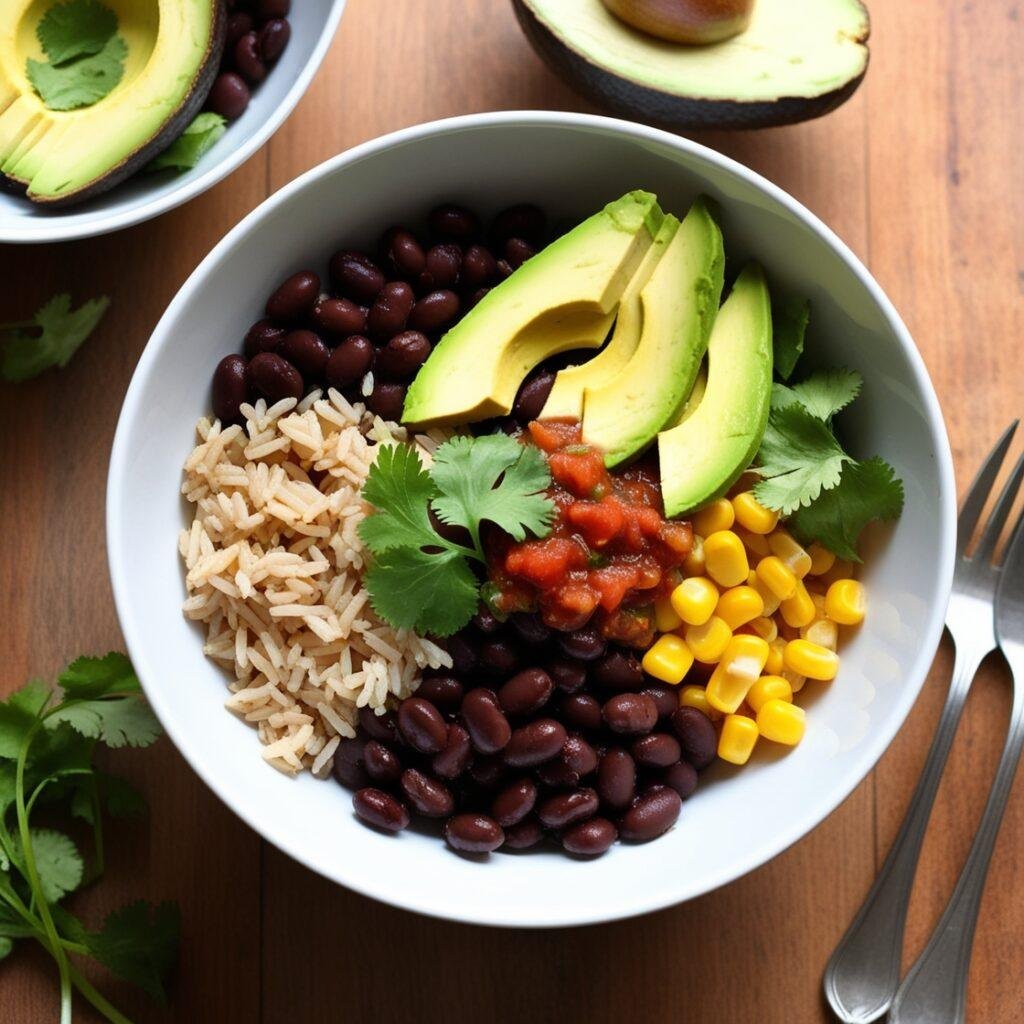
10. Black Bean and Avocado Burrito Bowl
A burrito bowl with black beans, avocado, brown rice, and corn.
Ingredients:
Black beans, avocado, brown rice, corn, salsa.
Prep:
Layer ingredients in a bowl and garnish with cilantro.
How to Incorporate More Fiber into Your Dinners
Adding more fiber to your diet doesn’t have to be complicated. Here are a few tips:
- Swap Refined Grains for Whole Grains: Choose whole wheat pasta, brown rice, or quinoa instead of refined grains.
- Load Up on Vegetables: Make vegetables the star of your plate. Include fiber-rich veggies like spinach, kale, sweet potatoes, and cauliflower.
- Add Legumes: Lentils, chickpeas, black beans, and other legumes are fantastic sources of fiber. Incorporate them into soups, stews, salads, and stir-fries.
- Experiment with Ancient Grains: Try barley, farro, and bulgur for added fiber in your meals.
- Don’t Forget Nuts and Seeds: Sprinkle flaxseeds, chia seeds, or nuts over salads and yogurt for an easy fiber boost.
Conclusion
Incorporating high-fiber dinner recipes into your daily routine is a simple yet powerful way to support your gut health. By using ingredients like beans, whole grains, and vegetables, you can create delicious, fiber-packed meals that keep your digestive system running smoothly. With the 10 recipes provided, you’re well on your way to a healthier gut and more satisfying high-fiber dinner recipes.
FAQs
1. How much fiber should I eat daily?
The recommended daily intake of fiber is 25-30 grams for adults. However, many people fall short of this goal, so adding high-fiber dinner recipes can help bridge the gap.
2. Can high-fiber dinner recipes help with weight loss?
Yes, high-fiber foods tend to be more filling, which can help you feel satisfied with fewer calories, potentially aiding in weight loss.
3. Are there any risks to eating too much fiber?
While fiber is essential, consuming too much too quickly can cause gas, bloating, and discomfort. Gradually increase your fiber intake and drink plenty of water to avoid these issues.
4. What are other good sources of fiber?
In addition to legumes, whole grains, and vegetables, fruits like apples, pears, and berries are excellent sources of fiber.
5. How can I tell if I’m getting enough fiber?
Signs that you’re getting enough fiber include regular bowel movements, reduced bloating, and a feeling of fullness after meals. You can also track your intake using food tracking apps.
